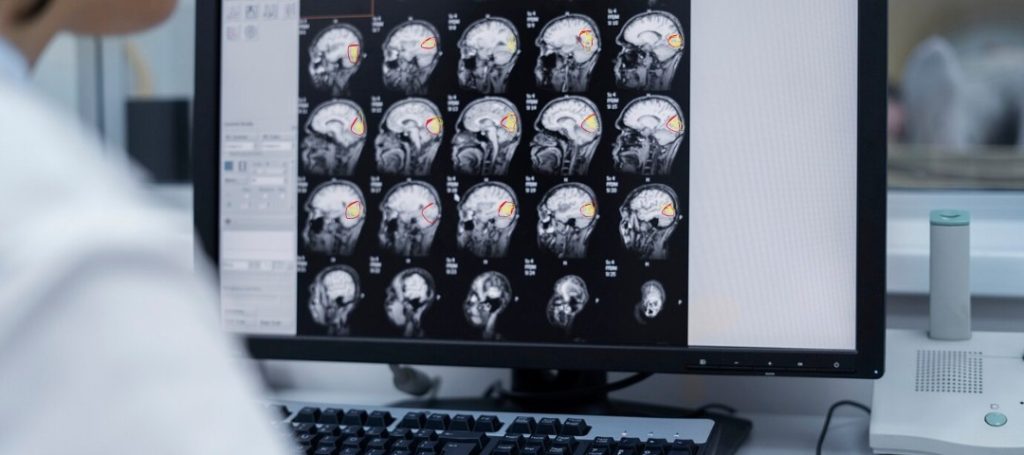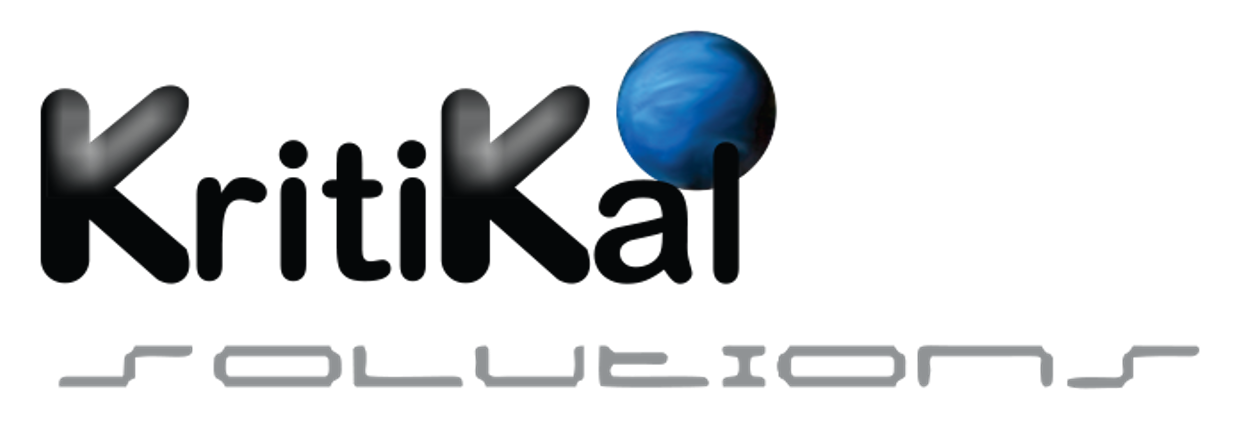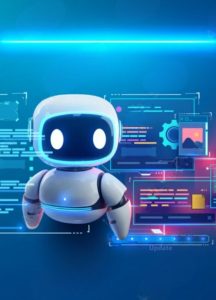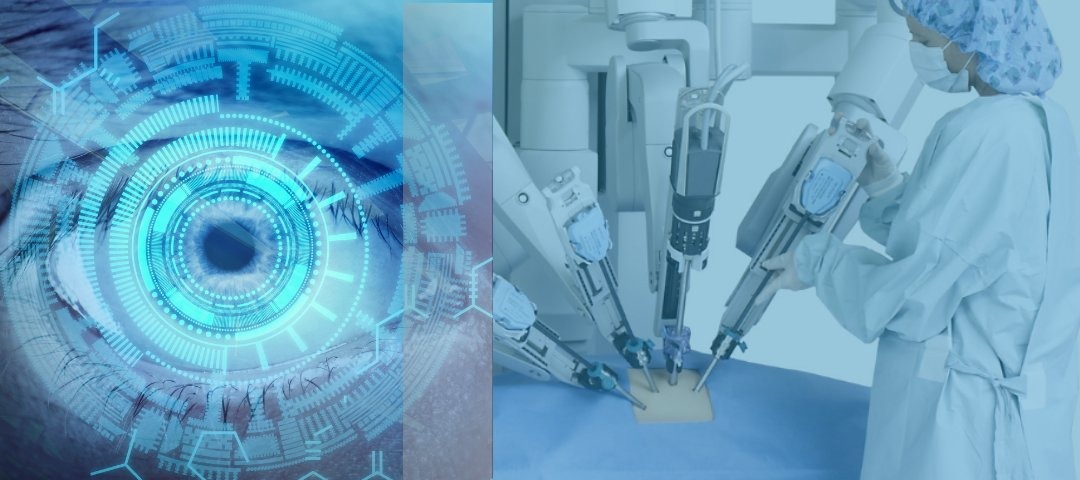Computer vision has emerged as a game-changing technology with multifaceted applications in various industries. To site an example, it has transformed the retail industry by enabling self-checkout kiosks and automated inventory management. Another industry that it has revolutionized profoundly is automotive by facilitating the working of advanced driver assistance system (ADAS), connected cars and autonomous driving. Other industries that it is applied in include manufacturing, construction, security and surveillance, agriculture, defense, and what not. This blog aims to provide a comprehensive overview on how computer vision applications play an important role in the healthcare segment such as for medical device design services by leveraging artificial intelligence and machine learning techniques.
When we consider computer vision applications in healthcare, they usually involve tasks such as image classification, object detection, image segmentation, in images and videos obtained. This is very beneficial for various medical departments such as dermatology, general surgery, radiology, pathology and many more. Computer vision applications powered by deep learning techniques can provide supportive second opinion to physicians and surgeons, assisting them in delivering excellence to their patients.
It was reported that the global market size of computer vision applications in the healthcare market was approximately ₹108.64 billion in 2022, steadily increasing at a CAGR of 35.2% during the period 2023 to 2030. Delving into region-wise statistics, the market size of computer vision solutions in India has currently reached a value of ₹36.86 billion. It is increasing at a CAGR of 15.13% and is likely to reach a value of ₹85.83 billion by 2030.

Market size outlook computer vision in India from 2020-2030
Computer Vision Applications in Healthcare
Nowadays, computer vision is applied in various fields across the healthcare industry such as in medical imaging, diagnosis, treatments, patient monitoring, elderly care, surgical assistance, drug discovery and operations management. Let us explore these notable applications in detail.
Clinical AI
Applications based on computer vision can analyze medical images obtained from computer tomography (CT) scans, magnetic resonance imaging (MRI), X-rays, endoscopy, radiology and ultrasounds. They can help in detection and automated diagnosis of chronic conditions that may have been missed by the human eye, such as fine fractures, tumors hidden inside tissues, and other abnormalities. Complex tasks like internal organ segmentation, detection and visualization of tumor, lesion identification, among others, can be achieved accurately without any errors in minimal time at the cost of traditional diagnostic methods.
The increasing efficacy of insights obtained from applications based on computer vision for healthcare can assist radiologists, surgeons and doctors in making informed decisions related to patient treatment while preventing unnecessary expenses, for example, image recognition algorithms can detect minor changes in patterns of tumor growth, rendering it as malignant. Moreover, it has proved to be an efficient tool in detection and diagnosis of skin and hair affecting conditions through models trained for skin surface analysis, wrinkle analysis, yellowness detection, specular shine analysis, cuticle analysis, hair root counting module, porphyrins and sebum analysis, to name some.

Image shows detection of tumor in CT scan as an application of computer vision in healthcare
Precision Surgery
Surgical navigation and assistance are now made possible with computer vision in the medical field. Perks like real-time guidance and widened field of view during surgical procedures have proven to be bliss for surgeons since the late nineteenth century. For example, superimposition of vital information like tumor boundaries and anatomical structure using augmented reality (AR) overlays onto the operative view can increase surgical precision and reduce operational risks. Diagnostic scans can be accessed before beginning the surgical procedure to locate the tumor and assess its size, without the aid of flat light source or printed films. With this technology, effective preoperative planning and intraoperative guidance can be assessed on the patient’s three-dimensional anatomical model.
Computer vision forms the basis of robot-assisted surgeries, a cutting-edge technology that involves camera and small surgical tools attached to robotic arms for conducting minimally general, thoracic, colorectal, gynecological, orthopedic, urological etc. surgeries. The arms are controlled by surgeons who view a magnified three-dimensional view of the patient’ state from a computer vision-powered console, also applicable in the case of telesurgeries from remote locations. During the surgery, computer vision algorithms track the position, orientation and performance of surgical tools through image segmentation for assisting surgeons. Ultimately, urgent healthcare assistance is made accessible across the globe with this technology despite geographical boundaries and time-zonal differences with various computer vision applications in healthcare.
Patient Monitoring
Another major application of computer vision in healthcare is assisting medical professionals in estimating and quantifying fitness, rehabilitation status and overall health of patients by deploying remote patient monitoring and tracking systems at homes, hospitals, mental institutes or rehabilitation rooms. Features such as emergency alerts, facial recognition, facial expression and behavior detection, activity and pose estimation, vital signs virtual monitoring, self-harm prevention etc. are incorporated using camera and sensors in these economical and convenient monitoring systems. Therefore, the need for regular hospital visits even in cases of chronic disease management is reduced, while early detection of changes in a patient’s health, physical therapy execution etc. facilitates timely intervention and quick decision making, for example, a computer vision-based software can measure blood lost during surgery, provide critical stage alerts and estimate the requisite amount needed.
Elderly Care
Computer vision for healthcare is also applicable in fall and other types of emergency detection for elderly community in a very non-intrusive manner using deep learning-based models. This reduces dependency and overall care related expenses as monitoring cameras are installed in their own homes, assisted-living centers, adult foster homes or care facilities, and video feeds are analyzed by care takers. Important alerts like discomfort of the patient, risk of fall detection, and other human actions recognition can assist caregivers to respond quickly, improve patient safety and quality of life. One of the standardized medical tests where computer vision plays an important role in video-assisted analysis in rehabilitation process and elderly care is Timed Up and Go (TUG) test. In this case, the system measures total time required for the patient to perform functional mobility tests and performs associated evaluation of tasks accomplished such as risk of falling and maintaining balance during walks.
AI-powered applications automatically monitor and track outcomes of treatments and physical exercises over time through health metrics such as vital signs, nutrition intake, activity levels, quality of sleep, REM cycle, and many others. Automated monitoring is especially useful for gaining insights and making informed decisions on patients’ progression of chronic conditions, people with disabilities or impairments, for example, computer vision-powered Braille keyboard, object detection alerts while getting a bus etc.

Image shows pose detection for elderly care as an application of computer vision for healthcare
Medical Training
One area where computer vision in medical field is put to efficient use is medical skill training, for example, simulation software or surgical simulation platforms, performance evaluation of budding surgeons on anatomical models, training manikin, patient simulators, virtual reality training, teaching stethoscopes, simulation for external defibrillators, test lungs etc. Surgery leads like specialty surgical registrars can gain detailed performance feedback and assessment such as hectic movements, regions of interest, activity levels etc.of junior residents, and other operating fellows for providing better patient care.
Smart Wearables
Gone are the times of agonizing experience of sharp needles, finger sticks, invasive sensors for measurement of health metrics like blood sugar, blood pressure, heart rate, respiratory rate, body temperature, and blood oxygen levels. Since nowadays, smart watches, smart jewelries, smart rings, smart clothes can act as fitness trackers and provide all such measurements in a jiffy. Tracking devices are useful for continuous monitoring of patient’s health, detection of abnormalities in vitals and promote personalized interventions.
Research & Development
In the modern era, big data is a common notion, and when one is to consider computer vision in healthcare, about 2,134 exabytes of new patient-related data was reported to be generated in 2020. No wonder assessing 2.9 million base pairs in human genome project, four quadrillion of human body cells, 750 million associated molecules, and drug discovery related processes are cumbersome, time taking and cost trillions, if not billions of rupees. All such dependencies can be relatively reduced by automating analysis of images of molecular structures, counting stained cells, detecting tissue structural changes etc. with computer vision techniques. This ultimately helps in drug discovery and development process, for example, automating identification of potential drug trial candidates, predicting drug efficacy, assessing safety profiles, clinical trial data analysis, alongside aforementioned use cases to streamline and accelerate the whole pipeline with respect to cost, resources and time to market.
Hospital Management
Healthcare operations, including inventory tracking, patient flow and safety management, hygiene monitoring, compliance assessment, hazardous waste management, data protection, premise security, prevention of spread of disease and infection, and more, can be significantly optimized. This can be done through the utilization and monitoring of medical supplies, identification of workflow bottlenecks in hospitals, implementation of patient wristbands powered by near-field communication (NFC) and electronic health record (EHR), hazardous waste detection and smart trash cans, alerts for unauthorized data access and restricted hospital areas, personnel facial recognition, activity monitoring, and mask detection respectively.

Image shows detection of mask in hospital as an application of computer vision in medical field
Future of Computer Vision for Healthcare
The current trends indicate that computer vision is likely to be indulged in most of the areas in the healthcare sector despite certain challenges such as data privacy, algorithm biases, regulatory compliance-related issues and more. This is because future research on these aspects triggers interdisciplinary collaborations, partnerships and subsequent advancements to overcome them, just like historical epidemics, world wars, natural disasters and other situations that mankind has conquered, resolved or mitigated over time. For instance, complete privacy compliance can be achieved by building software infrastructure with strong security measures like blockchain, encryption of isolated networks, server systems, private cloud for access and authorization, zero-trust access autonomous computing on real-time cloud monitoring systems or edge AI, and yet transparent data flow withing organization.
Telemedicine and teleconsultation are already in use for patients hailing from remote areas, prescribing medicines for generic illnesses and even pan-Indian naval deployment. It is possible that the medical staff and doctors would be wearing AR calling glasses for understanding the symptoms, look and feel of progressing disease or condition (like scales in dermatitis, or real-time vitals for bronchitis) for providing accurate and timely consultations to patients. Combination of smart wearables and at-home test kits, AI models trained on medical big data for detecting abnormalities in test kit results and providing microscopic insights on the same, alongside predictive medicine can change the face of computer vision for healthcare.
Gain Powerful Insights with KritiKal
Computer vision-based applications in healthcare have significantly improved patient outcomes, reduced healthcare costs, enhanced clinical workflows with accurate diagnoses, personalized treatments and efficient healthcare delivery. Only with thorough understanding and research can diverse applications be harnessed to their maximum potential, thus transforming the industry and leading to better outcomes for population worldwide.
KritiKal Solutions has contributed in revolutionizing healthcare through its multifaceted computer vision applications across a timeframe of decades. It has served as a technology design house for businesses with requirements related to computer vision in healthcare such as data collection and insights analysis, skin analysis, biophysical parameter mapping, hair analysis, mobile-based medical help and diagnosis applications, wrinkle analysis, medicine strip optical character recognition (OCR), anthropometric analysis, medical image dataset annotation, security monitoring, medical device refurbishment, hospital operation management software, and the list goes on. Please call us or mail us at sales@kritikalsolutions.com to avail our solutions.

Monali Patel currently works as a senior software engineer at KritiKal Solutions. She is highly skilled in Java Script (React.js, Node.js, Angular.js), and various programming languages and software like PHP, CSS, HTML, Bootstrap framework, web development, SQL etc. In addition to these, with her positive attributes like analytical thinking, problem-solving and attention to details.



 Global
Global  United States
United States 
